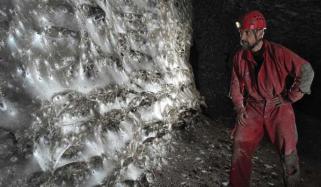
A new Australian native bee species with tiny devil-like "horns" has been discovered in the state of Western Australia's (WA) Goldfields.
The discovery of the bee species, named Megachile (Hackeriapis) lucifer, highlights how much remains unknown about Australia's native pollinators, according to a news release of Australia's Curtin University on Tuesday.
The bee was found during surveys of a critically endangered wildflower Marianthus aquilonarius that grows only in the Bremer Range region on WA's south coast.
The female bee's unusual horned face inspired its name lucifer, Latin for "light-bringer," but also a playful nod to the devilish look, said Kit Prendergast, adjunct research fellow at the Curtin School of Molecular and Life Sciences, lead author of the study published in the Journal of Hymenoptera Research.
"DNA barcoding confirmed the male and female were the same species and that it didn't match any known bees in DNA databases, nor did the specimens I had collected morphologically match any in museum collections," Prendergast said.
"It's the first new member of this bee group to be described in more than 20 years, which really shows how much life we still have to discover, including in areas that are at risk of mining, such as the Goldfields," he said.
"Because the new species was found in the same small area as the endangered wildflower, both could be at risk from habitat disturbance and other threatening processes like climate change," Prendergast said.
Notably, almost all flowering plants depend on wild pollinators, particularly bees, but habitat loss and climate change are driving many vital species to the brink of extinction.












